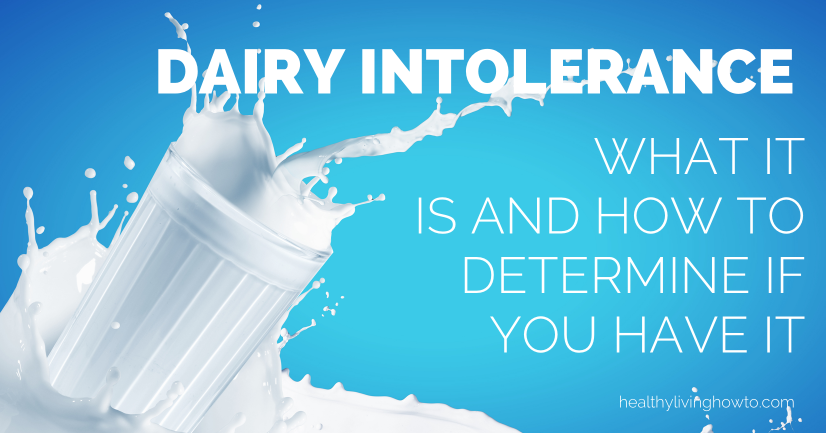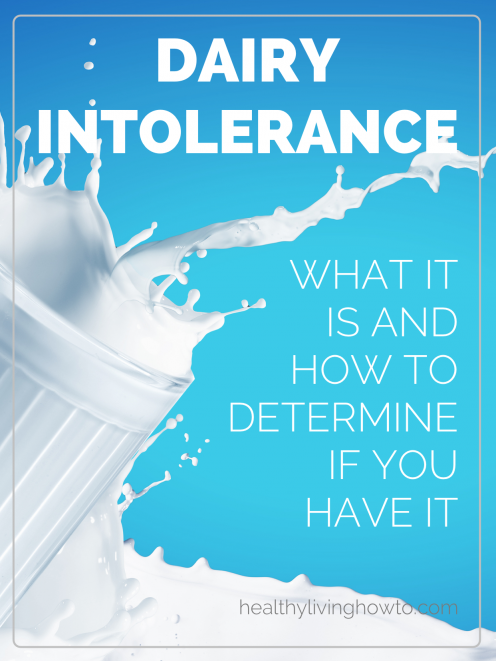Dairy Intolerance: What It Is And How To Determine If You Have It written by Mark Sisson and originally published at MarksDailyApple.com, is syndicated with exclusive permission for Healthy Living How To.
I often say that “dairy is fine and even healthy if you tolerate it.” But what exactly does that mean? How do you know if it’s “not okay”? You could be reacting poorly to the lactose, the casein, the whey, or all of it. You could just ditch all dairy forever more and be perfectly fine – but you shouldn’t eliminate a food group, especially one as delicious, nutrient-dense, and potentially rewarding as dairy, unless you absolutely must. Plus, it’s just good to know what you can and cannot tolerate. You don’t want to tiptoe through life, scared of food because you’ve never taken the time to determine your ability to tolerate it. You want to be empowered with knowledge and venture forth boldly – or carefully, if caution is warranted – through the cheese aisle.
The most common dairy components that people have trouble with are lactose and casein, with intolerance to each presenting differently. Let’s look at both.
Dairy Intolerance: What It Is And How To Determine If You Have It
Lactose Intolerance
Lactose intolerance occurs when people stop making lactase, the digestive enzyme located along the small intestinal wall that breaks lactose into glucose and galactose for easy digestion. This usually occurs around the age of four or five (lactose intolerance is incredibly rare in infants, for obvious reasons). Without lactase, lactose is instead metabolized by bacteria, which can cause stomach upset, flatulence, diarrhea, bloating, nausea, and a host of familiar but unwelcome gastrointestinal symptoms also seen in FODMAPs intolerance. In fact, the disaccharide lactose is a FODMAP. Lactose intolerance generally isn’t life threatening (unless you’re a baby who depends on a lactose-containing food) but it is annoying and can make life difficult and unpleasant.
Causes Of Lactose Intolerance
Most lactose intolerance develops because people stop producing lactase after weaning. No more breast milk, no more need to expend the energy necessary to produce lactase. This is usually genetically determined, and people with milk-drinking ancestry are far more likely to possess the gene(s) for lactase persistence (it takes just one copy to keep making lactase into adulthood).
Some lactose intolerance is transient and stems from damage to the epithelial cells lining the intestine, which are responsible for producing lactase in the gut. If something like viral gastroenteritis or food poisoning damages enough gut lining, lactase production and thus lactose digestion may be hampered for the duration of the sickness.
Other lactose intolerance stems from gut dysbiosis. Many gut bacteria, particularly Lactobacillus, produce lactase that help the host (that’s us) break down and absorb lactose. If your gut flora composition is missing the right species or overcrowded with the wrong ones, lactase production may suffer.
Prevalence Of Lactose Intolerance
About 75% of the world’s population shows decreased lactase production into adulthood, but distribution varies wildly by ethnicity and nation. Looking at this global map is probably a better way to understand the prevalence of lactose intolerance than throwing out a single number. Among Northern Europeans, who have a long history of dairy consumption, prevalence is around 5%. In most of Sub Saharan Africa, where dairy is rarely consumed, lactose intolerance nears or surpasses 90% prevalence.
How To Determine If You Have Lactose Intolerance
The medical profession uses two main tests for determining lactose intolerance. Both involve the test subject consuming a lactose-rich drink. The hydrogen breath test measures the amount of hydrogen in your breath. If you’re unable to digest lactose, any lactose you consume will make it to the colon to be digested by hydrogen-producing bacteria; this hydrogen will show up in your breath. Another option is the blood glucose test. If your glucose doesn’t go up after eating lactose, you’re not cleaving it into digestible monosaccharides and you are probably lactose intolerant.
At home, a simple test is the oral challenge: eat some lactose powder that you’ve mixed into water and see if any of the previously mentioned symptoms arise. Start with 25 grams of lactose, which is the amount found in two big glasses of milk. I would advise against using milk itself, since milk contains both whey and casein, and it might be difficult to parse which component you’re responding to. Even though lactose powder is a processed, isolate, refined component, it doesn’t really matter much since whole food lactose is identical.
![Dairy Intolerance: What It Is And How To Determine If You Have It | healthylivinghowto.com Dairy Intolerance: What It Is And How To Determine If You Have It | healthylivinghowto.com]() Dairy Protein Intolerance
Dairy Protein Intolerance
A dairy protein (whey or, more commonly, casein) intolerance is different than a full-blown allergy. In an allergy, consumption of the offending food elicits an immediate, acute, unmistakable immune response. You might get severely plugged sinuses, itchy skin, hives or rashes, hypotension, diarrhea, vomiting, an elevated heart rate, and have difficulty breathing. Tests can confirm it but you’ll probably already know you’re allergic. If a swig of milk causes anaphylaxis, you don’t need a post telling you to drop it for 30 days and reintroduce it. You’re already in the know.
Intolerances to the proteins in dairy are a bit more confusing. Some of the symptoms are similar to, if milder than those of allergic reactions. For some people, it manifests as constipation. For others, diarrhea. Still others get tingly fingers, joint pain, and a foggy head.
Whatever the symptoms of a dairy protein intolerance, they usually take longer to appear, making identification difficult. Plus, little scientific consensus exists on the nature of dairy protein intolerance. There are no universally accepted lab tests and few medical professionals will be able to help. Casein seems to be the most common dairy protein people are sensitive to; it’s far more rare for whey to be an issue.
Prevalence Of Dairy Protein Intolerance
According to population-based studies, the prevalence of cow’s milk protein allergy ranges from 0.25 to 4.9% of young children. It’s less prevalent among adults and older kids. Official numbers for milk protein intolerance prevalence are unknown because the condition itself is relatively unknown in the medical community.
How To Determine If You Have Dairy Protein Intolerance
You can do skin prick tests or shell out the dough for expensive food sensitivity lab results (that may not even tell you anything definitive), but the gold standard remains the food challenge: strict avoidance of the suspected food until symptoms subside followed by an oral challenge.
It seems like the simplest way to perform an oral challenge would be to eat some whey isolate or casein protein powder. After all, that’s just whey or casein, right? That may work, but I don’t think the results would necessarily transfer over to other sources of whey (like milk) or casein (like Greek yogurt). Unfortunately, the way we process dairy seems to change the structure of the proteins and, thus, their potential for reactivity. Fermentation of yogurt alters protein peptides. Heat treatment has been shown to make casein more allergenic and resistant to digestion by infants, while kids with cow milk allergy, for example, can tolerate baked milk fairly well – although that may be a function of quantity since “baked milk” is shorthand for “baked goods containing milk,” which are mostly flour and sugar, not milk protein.
So, given the fluid nature of dairy protein in response to processing, you may have to determine your tolerance of specific types of dairy to get an accurate picture.
The basic idea is to remove all dairy for at least 30 days. This gives your body a reprieve that, according to some, is necessary to re-sensitize your body to potentially problematic proteins. If dairy proteins are inducing a low-level inflammatory state that lasts for days or weeks and muddles the message, you need a solid chunk of time without any for reintroduction to provide accurate information. So skip the cheese, the milk, the cream, even the butter (I’m sorry) for 30 days if you suspect you have a dairy intolerance. Then, introduce dairy foods one by one, giving yourself two or three days to ensure lack of latent response before trying a new one.
- Casein-rich foods: most cheeses, Greek yogurt (yogurt with the whey drained), cottage cheese, casein protein powder
- Whey-rich foods: ricotta, whey protein powder
- Foods with casein and whey: milk, yogurt, kefir, butter
Causes Of Dairy Protein Intolerance
A major, and in my opinion likely, candidate for the cause of dairy protein intolerance is intestinal permeability, or leaky gut. An overly permeable intestine (all intestines are permeable to a certain degree; it’s excessive permeability that’s the main issue) allows protein fragments from the digestive tract into the bloodstream. When the immune system identifies these errant proteins as invaders, it does what it does in response to any other invading pathogen: mount an attack and fortify the body’s defenses by releasing histamine (which tries to get rid of the “pathogen” by inducing diarrhea, sneezing, runny nose, watery eyes, and all the other symptoms you might get from an allergic or intolerance reaction). In a perfect world, casein may not be inflammatory in and of itself, but its presence in the bloodstream can invite an inflammatory response.
What to Do About Dairy Intolerance
Say you’ve figured out you have an intolerance but you still want to eat dairy. What can you do?
If it’s lactose intolerance, you can beat that. Chris Kresser explains how to go about it.
Try different kinds of dairy. Try raw. Try fermented. Try grass-fed. Try organic. Try sheep. Try goat. Try camel, even. Try hard cheese, aged cheese, soft cheese. Try yogurt or kefir. Try ghee. Try A2 dairy. In other words, you may not be intolerant of all forms of dairy.
Fix your gut; make it less permeable. Easier said than done, I know. Here are some things to try or track to tighten up those tight junctions:
- Be vitamin D replete. Activation of the vitamin D receptors on the intestinal wall inhibit intestinal permeability. If you lack adequate vitamin D, your gut permeability may increase, leaving you open to dairy intolerance.
- Eat fermented foods and/or probiotics. One study (highlighted by a reader last week; hat tip to you) showed that adding a probiotic strain to dairy could inhibit intestinal permeability.
- Feed your gut flora with prebiotics. Prebiotics like inulin and resistant starch (which I discussed here) have been shown to increase butyrate production and reduce intestinal permeability.
- Get a handle on stress (or change how you approach it). Stress can increase intestinal permeability and disrupt your digestion.
- Exercise regularly. This can attenuate the stress-induced permeability.
- Watch your omega-6 intake and be sure to get your omega-3s. Omega-6 PUFAs lower occludin in tight junctions, making them not so, how you say, tight. DHA had the opposite effect.
Visit MarksDailyApple.com for daily articles on how to live a healthy Primal lifestyle in the modern world.

